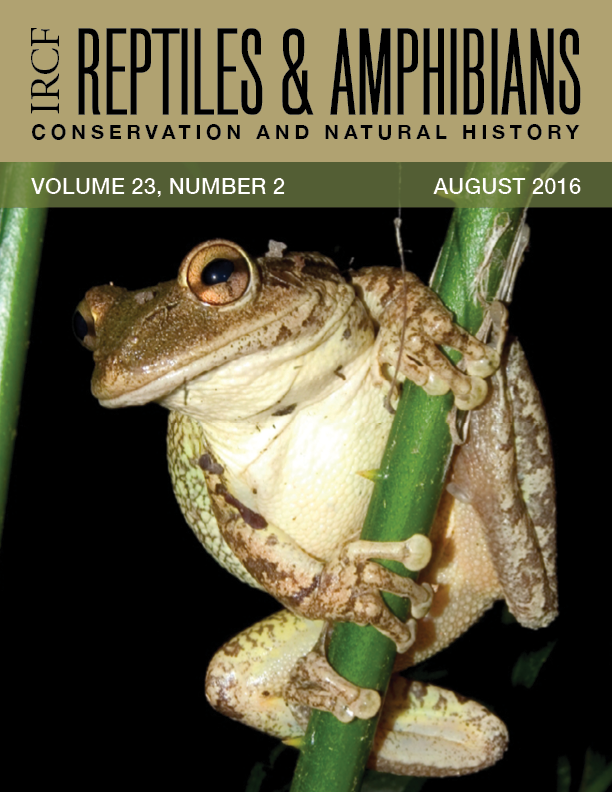New verified nonindigenous amphibians and reptiles in Florida, 1976 through 2015, with a summary of over 152 years of introductions
DOI:
https://doi.org/10.17161/randa.v23i2.14119Abstract
More nonindigenous species occur in Florida, USA, than any other region worldwide and may threaten many of Florida’s natural resources. The frequency of new reports mandates the need for regular updates. Herein, we use photographic and specimen vouchers in addition to literature records to provide updated information on verified nonindigenous amphibians and reptiles in Florida. Between our most recent summary in 2012 and the end of 2015, 38 additional species are known to have been intercepted (n = 2) or introduced (n = 36). We also update the invasion stage of seven species previously reported from Florida and report that five additional taxa are now established. In total, 191 independent known introductions of 180 herpetofaunal taxa led to the establishment of 63 taxa. This suggests that one in three introduced herpetofaunal species becomes established in Florida. The pet trade represents the most common introduction pathway among these species animal importer in Hollywood, Broward County, is the probable source for introduction of a quarter of all herpetofauna introduced to Florida.
Downloads
Published
Issue
Section
License
Copyright is held by the authors. Articles in R&A are made available under a Creative Commons Attribution-NonCommercial 4.0 International license.

